Airman Second Class Shirley Elizabeth McIntyre
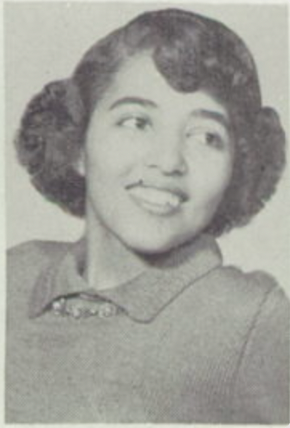
- Date of Birth: March 28, 1933
- Entered the Military: April 22, 1952
- Date of Death: March 19, 2022
- Hometown: Detroit, Michigan
- Place of Death: Detroit, Michigan
- Award(s): National Defense Service Medal
- Cemetery: Section 9A Site 1637. Great Lakes National Cemetery, Holly, Michigan
Mentored by Ms. Tara Fugate
Fraser High School and Richards Middle School
2024/2025
Early Life
Shirley Elizabeth McIntyre was born to Nathaniel McIntyre and Chaeber Hudson on March 28, 1933, in Detroit, Michigan. She was the third child born into the family and shared her childhood with her three siblings—two brothers and a sister: Ivan, Francis, and Ronald. When McIntyre was nine years old, her parents divorced, and her mother took a job at the post office to support the family, making McIntyre see the importance of a strong work ethic. Another value her mother instilled in her children was the importance of education. She ensured that her children took advantage of any educational opportunities that came their way.
The feeling of being stuck prompted McIntyre to enlist in the military, knowing it could lead to educational opportunities and a potential career.
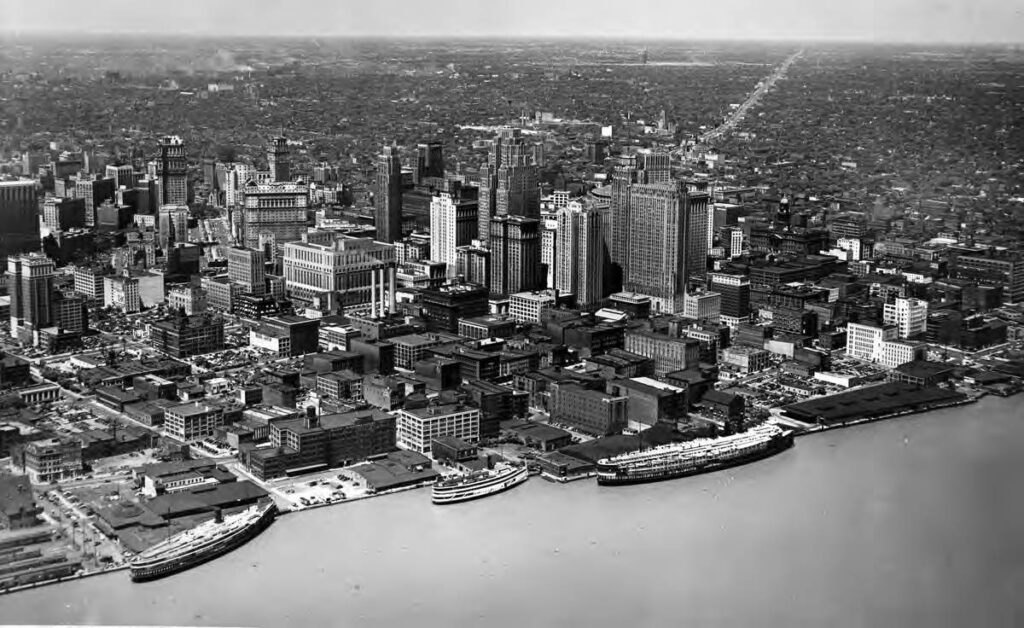

Homefront
Until her teenage years, McIntyre lived in Detroit, Michigan. Throughout her childhood, Detroit was a sprawling city of about 1.6 million people with an economy closely tied to the automotive industry. During World War II, Detroit became known as the “Arsenal of Democracy” because the automotive industry was repurposed to support the war effort; instead of cars and trucks, Detroit produced tanks and planes. By 1950, Detroit’s population grew to nearly two million; however, changes in the economy after World War II led to more competition for the good-paying jobs the auto industry offered. This competition led to an increase in racial tension, causing many to leave.
Shirley McIntyre’s family left Detroit in the 1950s and moved to Willow Run, an industrial town built around the suburban cities of Ypsilanti and Ann Arbor. The Willow Run Bomber Plant was created by Ford in 1941 to produce B-24 Liberators during World War II. As an incentive, Willow Run provided housing for its workers, and after the war, many stayed in Willow Run and the neighboring cities instead of returning to Detroit. By the 1950s, Willow Run was no longer producing B-24 Liberators for the U.S. military; instead, it produced automobiles for consumers.
Additionally, the proximity of Willow Run to the University of Michigan was a draw for many. In 1940, just before the U.S. entered World War II, Ann Arbor was home to approximately 30,000 people; 12,000 of those people were students. However, after World War II, the university’s enrollment spiked. In one year alone, the university saw growth from 12,000 to 19,000 students.
Even though Willow Run’s production shifted to automobiles, the skilled workforce and infrastructure to build aircraft remained. In 1953, General Motors purchased Willow Run from Ford, leading to more economic and population growth.
In 1953, Willow Run began producing “Flying Boxcars,” which were used during the Korean War to transport supplies and troops during airlift missions. To accommodate the growing population and new production, a new highway was built, connecting Detroit and Willow Run.
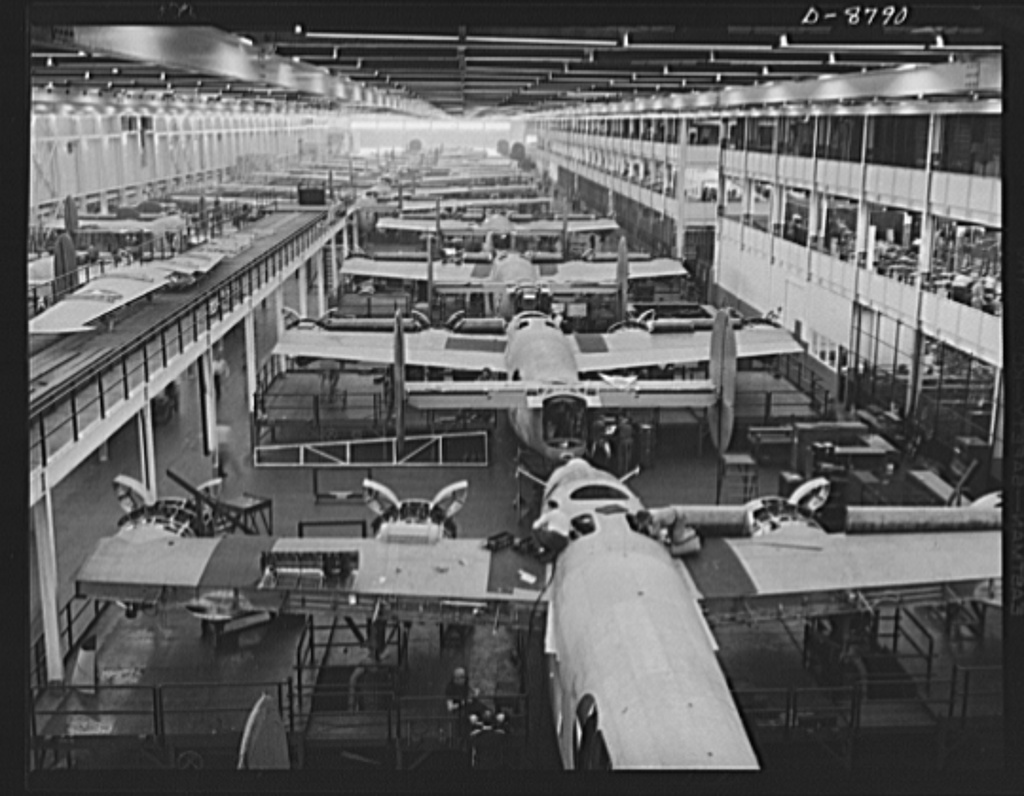
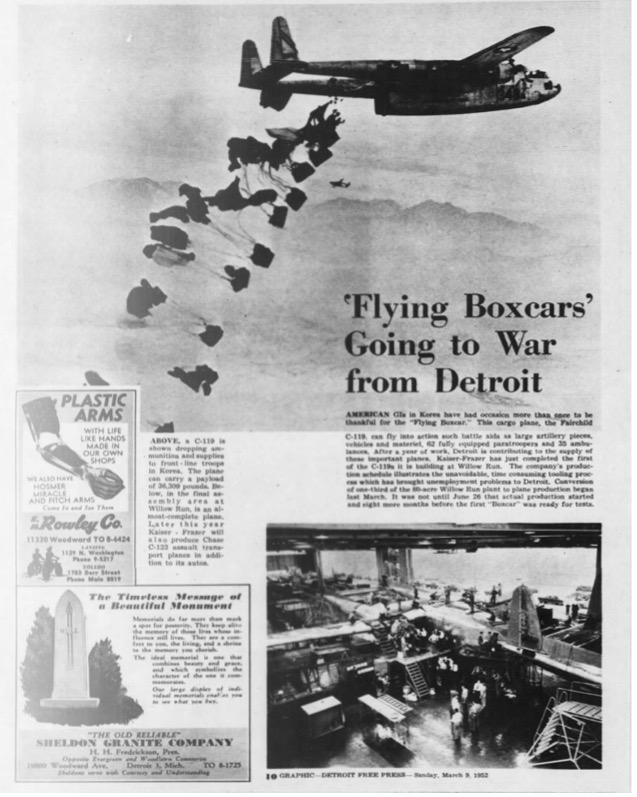
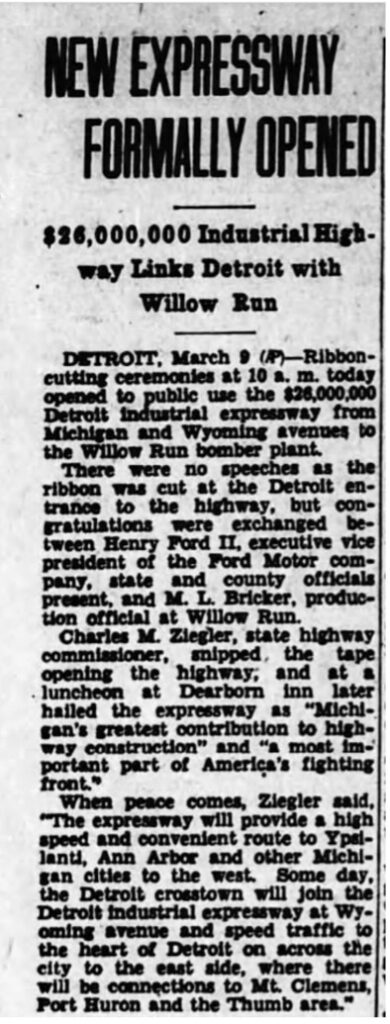
Military Experience
In March 1952, McIntyre enlisted in the U.S. Air Force in Grand Rapids. Soon after enlisting, she and other recruits took a train from Michigan to Lackland Air Base in Texas.
Leaving Detroit, all enlistees were able to sit together and mingle. As they prepared to cross from Illinois to more southern states where Jim Crow laws were in place, recruits began to prepare to move into segregated sections, with White passengers sitting in one section and Black passengers sitting in another. However, to McIntyre’s relief, no one had to move. Despite traveling in the South, where segregated seating was customary, the government arranged it so that no recruits had to switch seats. As a result, McIntyre traveled with another young female enlistee from the Upper Peninsula. They remained friends throughout their eight-week basic training course at Lackland.
After basic training, McIntyre moved on to Tech Training School at Francis E. Warren Air Force Base in Cheyenne, Wyoming. There, she spent eight weeks training, and though she hoped to be chosen as an Air Traffic Controller, she knew it was unlikely due to the limited number of women chosen for that role. After graduating from the program, she received orders to go to Mather Air Force Base in Sacramento, California. At Mather, she was assigned to Strategic Air Command and Air Training Command.
During this time, McIntyre met her future husband, Donovan Givens, who was also serving at Mather. The couple met through a mutual friend when McIntyre bought her first car and needed someone to teach her to drive it; Givens volunteered, and the pair quickly became close. When they learned that Givens was being transferred to Waco, Texas, the couple chose to marry instead of enduring a separation. This decision prompted McIntyre to leave the Air Force. On June 22, 1954, she was honorably discharged and moved with her new husband to Waco, Texas, where he continued his service.
At the time of her discharge, McIntyre had reached the rank of Airman Second Class and was awarded the National Defense Service Medal.

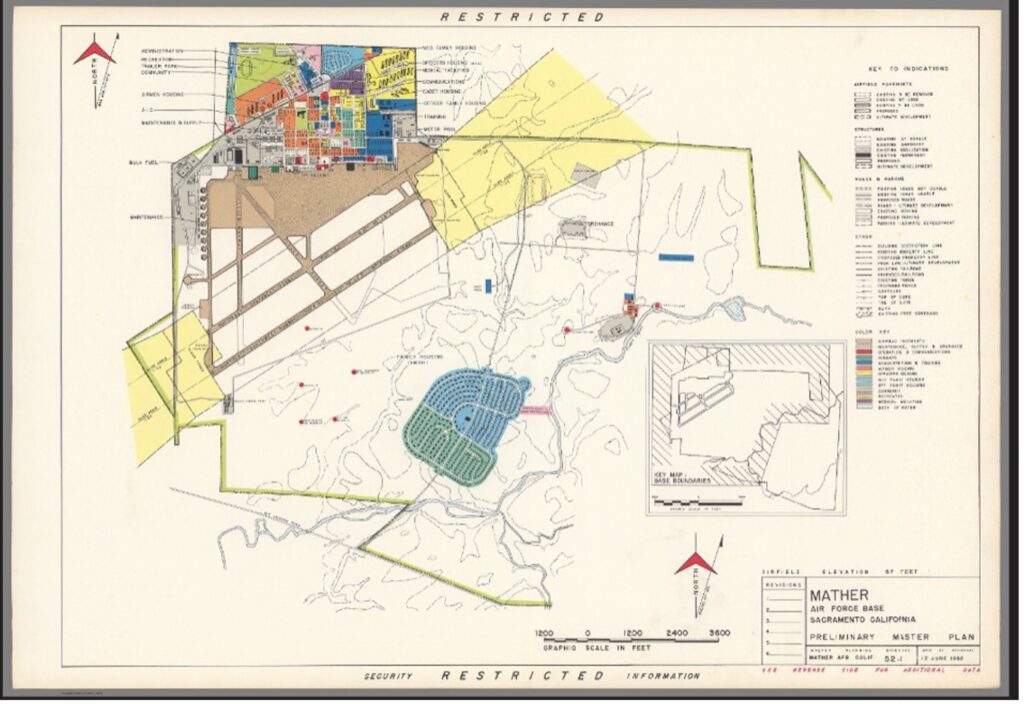
Veteran Experience
Shirley McIntyre’s husband served in the Air Force until 1955. Upon his honorable discharge, the couple, expecting their first child, returned to Detroit.
While her husband entered a pre-med program at Wayne State University, McIntyre started business school and eventually found work at Michigan Bell, a local telephone company. However, six months after their daughter was born, her husband was accepted into the medical school at the University of Michigan, and she transferred to Michigan Bell’s Ann Arbor office. She did not stay long at this job; instead, she took a job as a secretary at the University of Michigan’s Department of Human Genetics. She held this job until her husband completed medical school.
Together, the couple raised their four daughters: Linda, Rachel, Donna, and Elizabeth.
Once her children were grown, she began a new chapter of her life. With the Servicemen’s Readjustment Act of 1944 (commonly known as the G.I. Bill), she attended Wayne State University, graduating with a Bachelor of Fine Arts. Using her bachelor’s degree, she pursued a lifelong passion for painting, drawing, mixed media, sculpting, and pottery. In 1979, she earned a Master’s Degree in Social Work from the University of Michigan.
In the 1980s, McIntyre worked for the Detroit Health Department’s AIDS project. She developed testing protocols, notified individuals who received positive test results, trained other social workers, and created the Coalition of Health Outreach Workers to serve her community.
As a longtime patron and lover of the arts and champion for education, McIntyre left an impactful mark on the city of Detroit. She did this by starting a scholarship program for Detroit students who wanted to pursue a degree in the arts at the university level and by leading health initiatives for the Detroit Department of Health, such as an organization called the Coalition of Health Outreach Workers (CHOW).
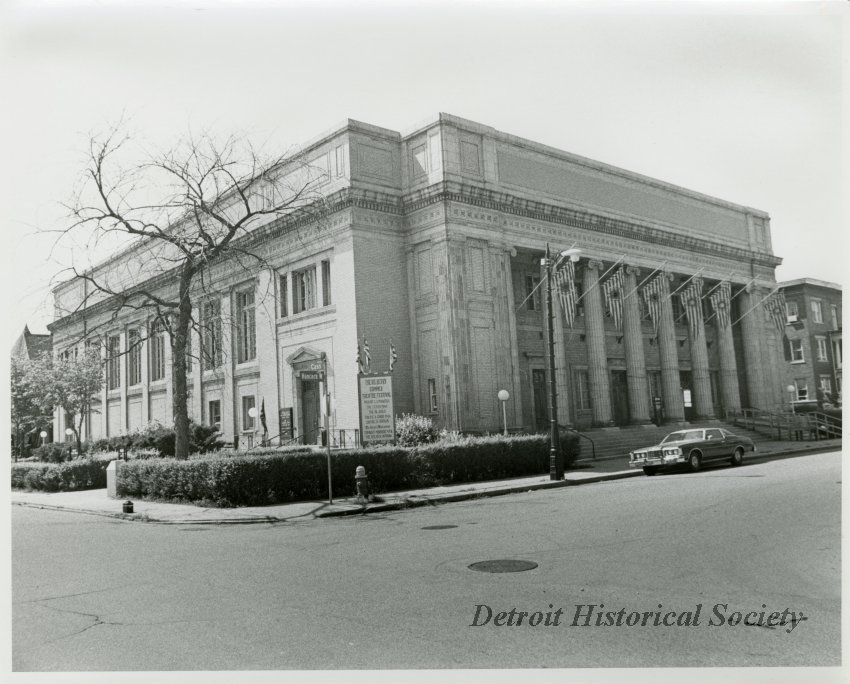
Commemoration
On March 19, 2022, McIntyre passed away in Detroit and was later buried at the Great Lakes National Cemetery in Holly, Michigan.
On March 26, 2022, the Detroit City Council wrote a testimonial resolution to honor her inspirational life of service.
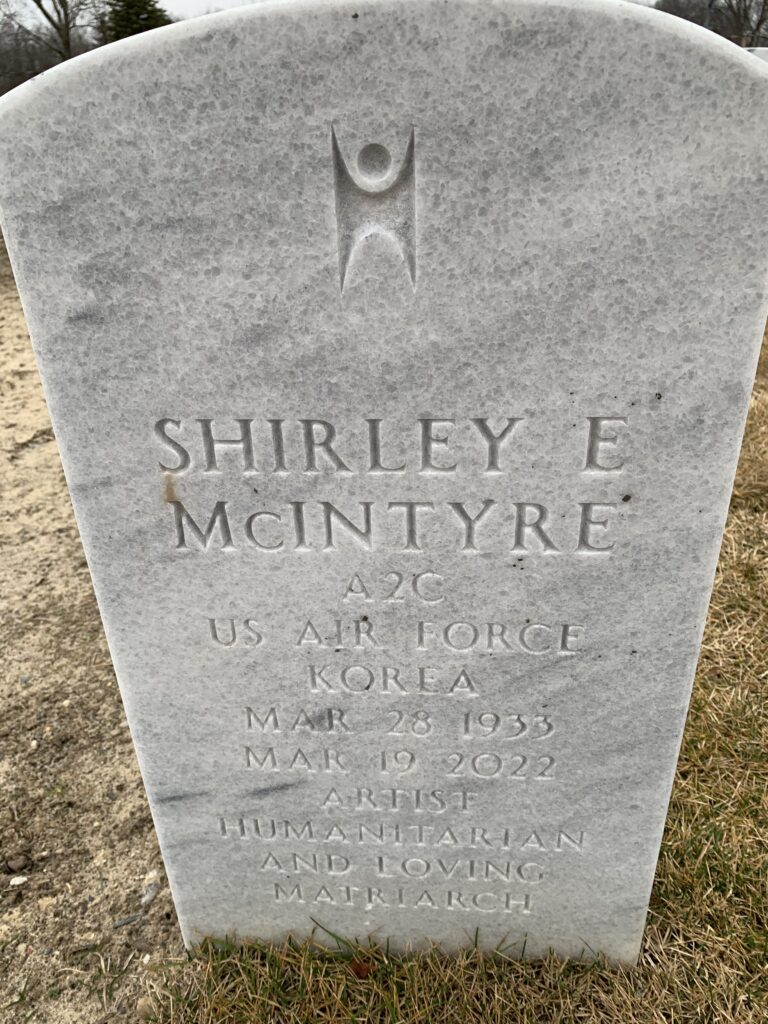
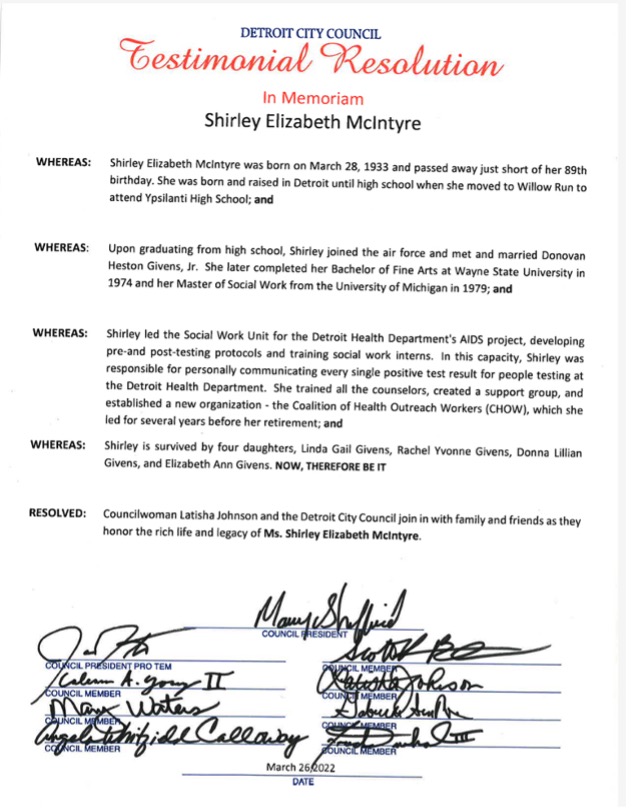
Bibliography
Primary Sources
Detroit City Council. Testimonial Resolution: In Memoriam – Shirley Elizabeth McIntyre. Detroit, Michigan, 2022. https://pub-detroitmi.escribemeetings.com/filestream.ashx?DocumentId=31356.
“Flying Boxcars Going to War from Detroit.” The Detroit Free Press [Detroit, MI], March 9, 1952. Newspapers.com (98029108).
The Gateway to the Air Force. Photograph. National Museum of the United States Air Force (230830-F-10108-008). https://www.nationalmuseum.af.mil/Upcoming/Photos/igphoto/2003292443/.
“Givens-McIntyre.” The Sacramento Bee [Sacramento, CA] June 5, 1954. Newspapers.com (617577804).
Hollen, Howard R. Production. B-24E (Liberator) Bombers at Willow Run… 1942-1943, Photograph, Farm Security Administration, Library of Congress (201769636). https://www.loc.gov/item/2017696326/.
“K-F to Build Airport Transports.” The Detroit Free Press [Detroit, MI], January 5, 1951. Newspapers.com (97523701).
Mather Air Force Base : Sacramento, California : Preliminary Master Plan. Map. 1952. David Rumsey Historical Map Collection. https://www.davidrumsey.com/luna/servlet/detail/RUMSEY~8~1~314896~90083977:Mather-Air-Force-Base—Sacramento-.
Michigan. Ann Arbor. 1960 City Directory. Digital images. http://ancestry.com.
Michigan. Washtenaw Country. 1950 U.S. Census. Digital images. http://ancestry.com.
Michigan. Wayne County. 1940 U.S. Census. Digital images. http://ancestry.com.
Murphy, Kevin. Mackenzie Hall. Photograph. 1975. Detroit Historical Society (2014.003.945). https://detroithistorical.pastperfectonline.com/Photo/BF7E93AE-1713-461A-BAB5-236232312331.
“New Expressway Formally Opened.” The Lansing State Journal [Lansing, MI], March 9, 1945. Newspapers.com (211102770).
Shirley McIntyre. Ypsilanti High School Yearbook. 1950. Digital images. http://ancestry.com.
Shirley E. McIntyre Collection. Oral history. Veterans History Project, Library of Congress (AFC/2001/001/101441). https://www.loc.gov/item/afc2001001.101441/.
Shirley Elizabeth McIntyre. Birth, Marriage & Death Records, 1933-2022. https://ancestry.com.
Shirley Elizabeth McIntyre, DD-214, Department of the Air Force. National Archives and Records Administration – St. Louis.
“Shirley Elizabeth McIntyre.” Kemp Funeral Home & Cremation Service. Accessed October 10, 2024. https://www.tributearchive.com/obituaries/27913731/shirley-elizabeth-mcintyre.
Spina, Tony. Skyline, Detroit, Riverfront, Downriver View, 1940. Photograph. 1940. Walter P. Reuther Library, Wayne State University (spina_2916). https://wayne.contentdm.oclc.org/digital/collection/spina/id/457/.
Willow Run Bomber Plant, Beginning Construction, 1940. Photograph. 1940. The Ann Arbor News, Ann Arbor District Library. https://aadl.org/N015_0858_005.
Secondary Sources
Afana, Dana. “‘Detroit Is a Vibrant and Growing City Again’; Population Grows for First Time since 1957.” Detroit Free Press [Detroit, MI], May 16, 2024. https://www.freep.com/story/news/local/michigan/detroit/2024/05/16/census-bureau-report-detroit-population-increases/73701788007/.
Billings, Robert. “Willow Run after WWII.” Military History of the Upper Great Lakes, October 12, 2015. Accessed December 10, 2024. https://ss.sites.mtu.edu/mhugl/2015/10/12/willow-run-after-wwii/.
Eschner, Kat. “How Detroit Went from Motor City to the Arsenal of Democracy.” Smithsonian Magazine, March 28, 2017. Accessed December 10, 2024. https://www.smithsonianmag.com/smart-news/when-detroit-was-arsenal-democracy-180962620/.
“Fairchild C-119J Flying Boxcar.” National Museum of the United States Air Force. Accessed November 15, 2024. https://www.nationalmuseum.af.mil/Visit/Museum-Exhibits/Fact-Sheets/Display/Article/197556/fairchild-c-119j-flying-boxcar/.
“National Defense Service Medal.” Air Force Personnel Center. Accessed December 10, 2024. https://www.afpc.af.mil/Fact-Sheets/Display/Article/421890/national-defense-service-medal/.
“Shirley E. McIntyre.” Veterans Legacy Project, U.S. Department of Veterans Affairs. Accessed March 22, 2025. https://www.vlm.cem.va.gov/SHIRLEYEMCINTYRE/a00040.
“Shirley Elizabeth McIntyre.” Find a Grave. Updated April 29, 2022. Accessed October 17, 2024. https://www.findagrave.com/memorial/239304523/shirley-elizabeth-mcintyre.
Taylor, Alan. “Detroit in the 1940s.” The Atlantic, January 14, 2015. https://www.theatlantic.com/photo/2015/01/detroit-in-the-1940s/384523/.
“The 1950’s.” Ann Arbor District Library. Accessed November 15, 2024. https://aadl.org/aapd/truecrimes/5.
“The Korean Conflict.” State of Michigan. Accessed November 15, 2024. https://www.michigan.gov/dmva/about/history/military-events/highlights/the-korean-conflict.
“The War Hits Home.” Ann Arbor District Library. Accessed November 15, 2024. https://aadl.org/moaa/pictorial_history/1940-1974pg1.
Thomas, Alex. “A Tale of Two Towns?” What’s Left Ypsi, Updated June 8, 2020. Accessed November 29, 2024. https://whatsleftypsi.com/2019/a-tale-of-two-towns/.
“Willow Run.” Encyclopedia of Detroit. Accessed November 15, 2024. https://detroithistorical.org/learn/encyclopedia-of-detroit/willow-run.
This profile was funded by a grant from the United States Department of Veterans Affairs. The opinions, findings, and conclusions stated herein are those of the author and do not necessarily reflect those of the United States Department of Veterans Affairs.

